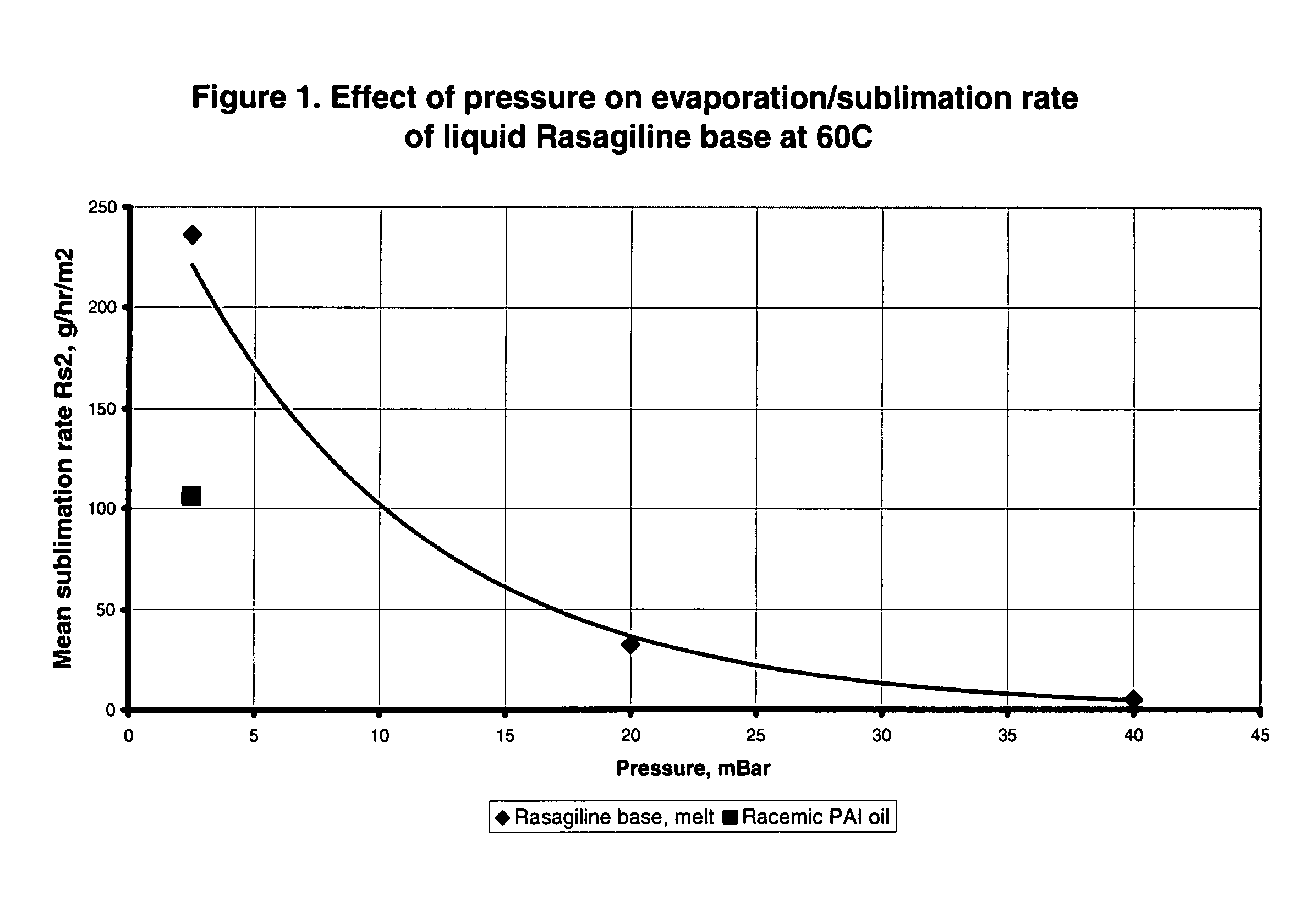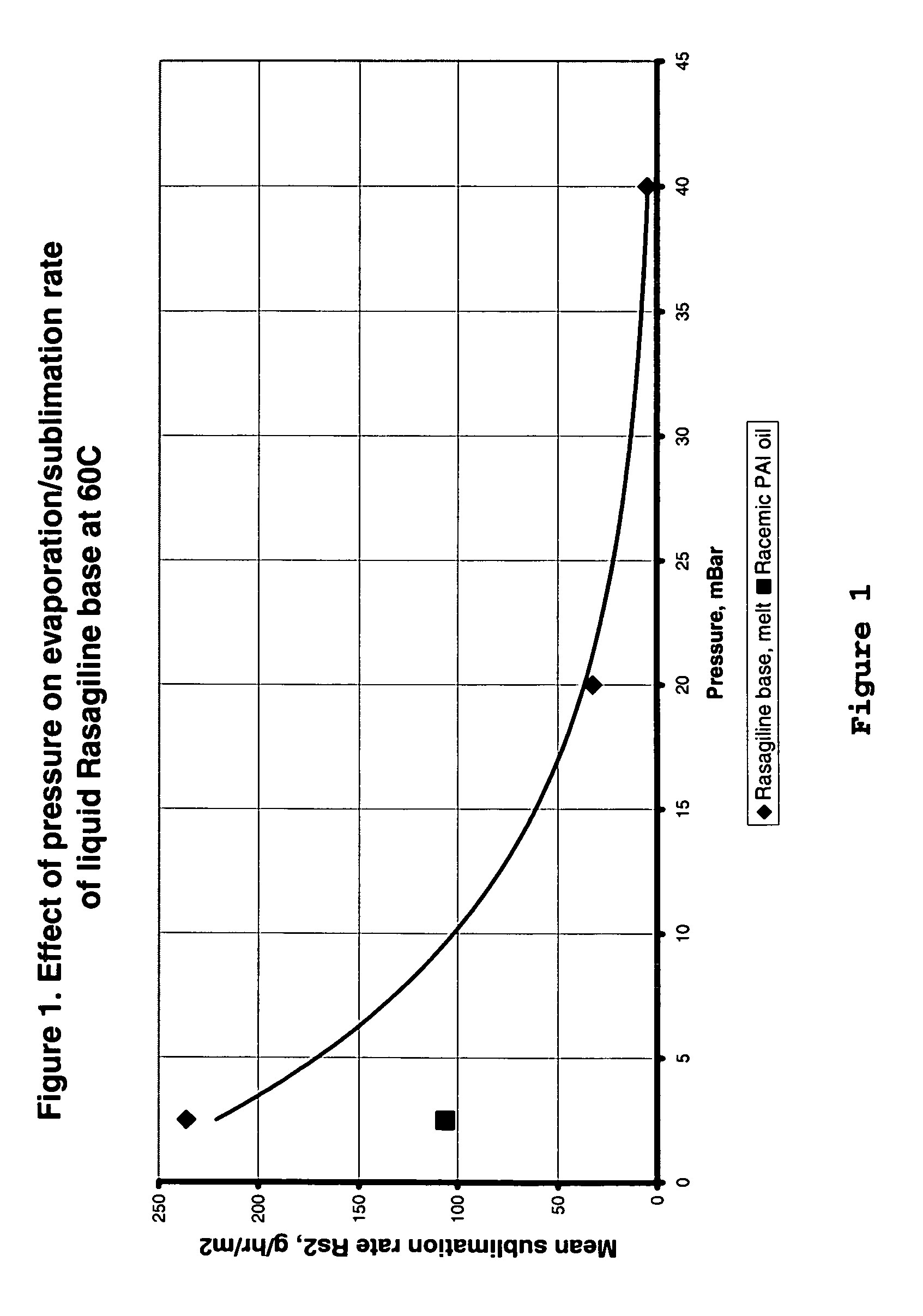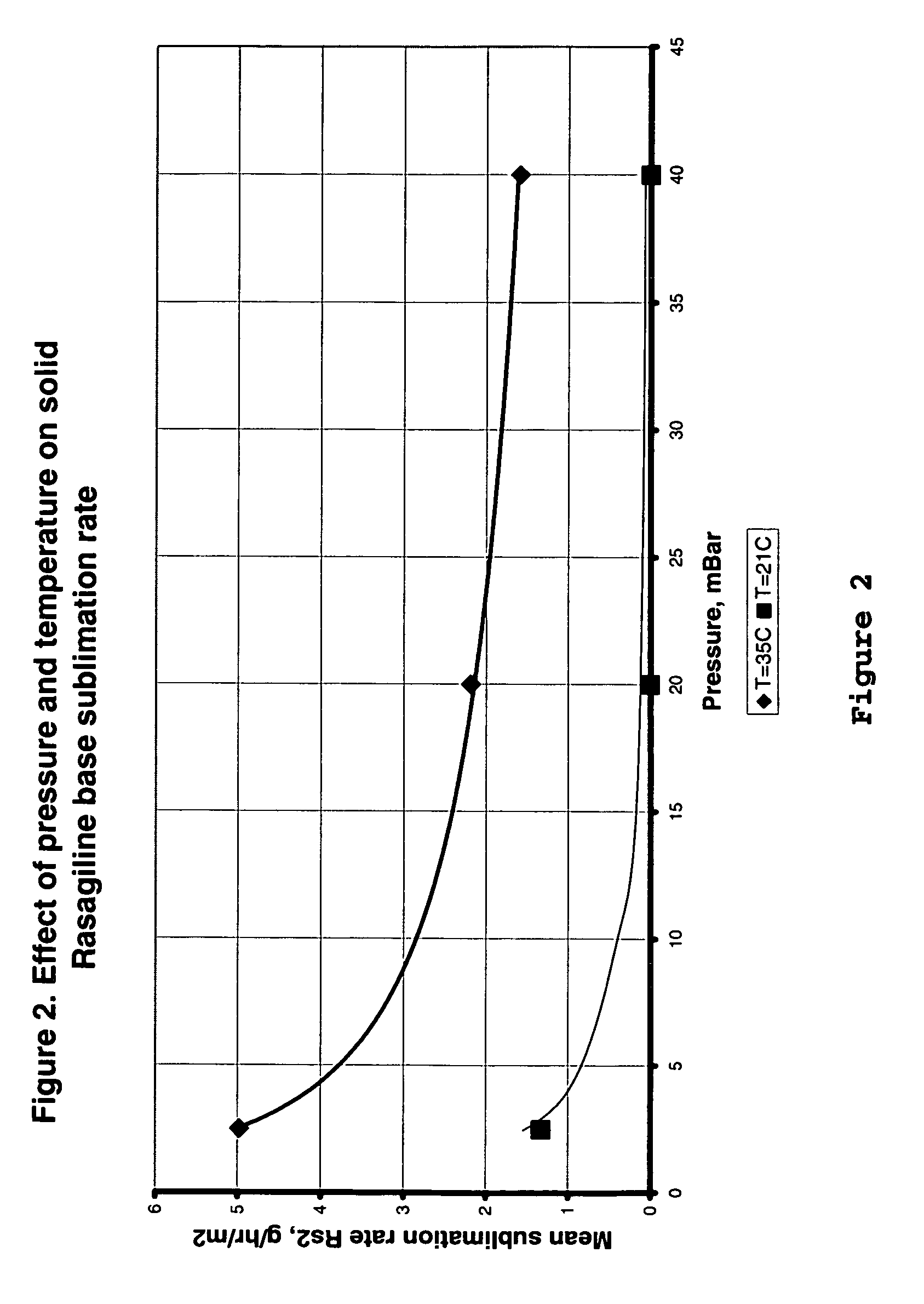Process for purifying rasagiline base
a technology of rasagiline and purification method, which is applied in the field of purification process of rasagiline base, can solve the problems of inadequate methods for such purification and cannot be used in application, drug composition, biocide,
- Summary
- Abstract
- Description
- Claims
- Application Information
AI Technical Summary
Benefits of technology
Problems solved by technology
Method used
Image
Examples
example 1
Isolation of Rasagiline Base by Splitting and Extraction
[0075]Rasagiline mesylate was prepared essentially as described in U.S. Pat. No. 5,532,415 example 6B, with the exception that the tartrate salt was split by addition of NaOH, and the rasagiline free base was isolated as an oil. The mesylate salt was then formed by addition of methanesulfonic acid.
[0076]120 g of rasagiline mesylate were dissolved in 700 ml of deionized water. 400 ml of toluene were added and the mixture was basified with 25% NaOH solution to a pH of about 14. After stirring, two phases separated. The lower water phase was extracted with 200 ml of toluene. The phases were allowed to separate and the aqueous phase was discarded.
[0077]The two toluenic extractions were combined and the solvent was distilled under vacuum. The yield of rasagiline base was 88.5 g of a yellowish oil with a melting point of below 20° C.
[0078]25.1 g of the liquid rasagiline base was sampled. The sample was mixed with ethanol and the solv...
example 2
Isolation of Rasagiline Base by Splitting and Extraction
[0079]155 g of rasagiline tartrate, prepared essentially as described in U.S. Pat. No. 5,532,415 example 6B, and 20 g of rasagiline mesylate, prepared as described in example 1, were dissolved in 800 ml of water. 400 ml of toluene were added to the solution and the mixture was basified with 25% NaOH solution to a pH of about 14 and heated to 45±5° C.
[0080]After stirring, two phases were separated. The lower water phase was extracted twice with 300 ml of toluene at 45±5° C. The organic phases were combined and the aqueous phase was discarded.
[0081]The combined organic phase was washed with 200 ml of deionized water. Then the solvent was distilled under vacuum and 50 ml isopropanol were added to the resulting residue. The solvent was removed by vacuum and additional 50 ml isopropanol were added and then removed by vacuum. 100 g of syrup-like liquid rasagiline base were formed.
example 3
Splitting and Spontaneous Crystallization from Water
[0082]15 g of rasagiline mesylate were dissolved in 150 ml water while stirring. The solution was cooled to 5° C. and 25% NaOH solution was added slowly. During the addition, batch temperature was maintained between 3 and 5° C. Solid precipitation was observed after reaching a pH of 7.5. After reaching a pH of 11, the NaOH addition was stopped, the batch was stirred while cooling for one hour and filtered. The filtration proceeded quickly. The solid product was washed with water on the filter and dried under vacuum.
[0083]8.8 g of solid dried rasagiline base were attained. The yield was 91.6%. The melting point of the solid was determined to be 38.2-38.4° C.
PUM
| Property | Measurement | Unit |
|---|---|---|
| pressure | aaaaa | aaaaa |
| pressure | aaaaa | aaaaa |
| pressure | aaaaa | aaaaa |
Abstract
Description
Claims
Application Information
 Login to View More
Login to View More - R&D
- Intellectual Property
- Life Sciences
- Materials
- Tech Scout
- Unparalleled Data Quality
- Higher Quality Content
- 60% Fewer Hallucinations
Browse by: Latest US Patents, China's latest patents, Technical Efficacy Thesaurus, Application Domain, Technology Topic, Popular Technical Reports.
© 2025 PatSnap. All rights reserved.Legal|Privacy policy|Modern Slavery Act Transparency Statement|Sitemap|About US| Contact US: help@patsnap.com



